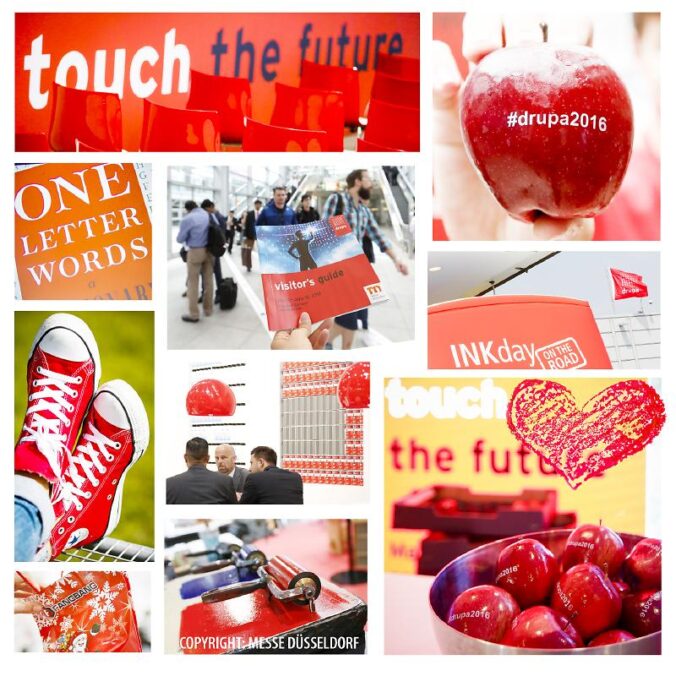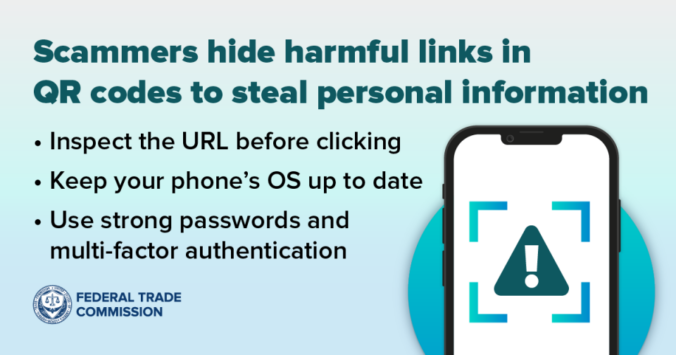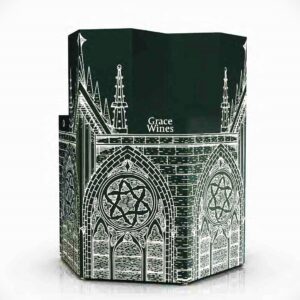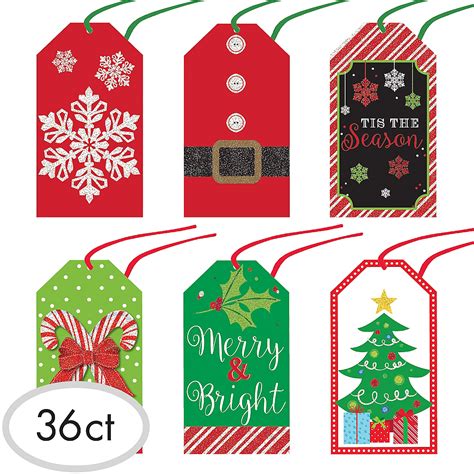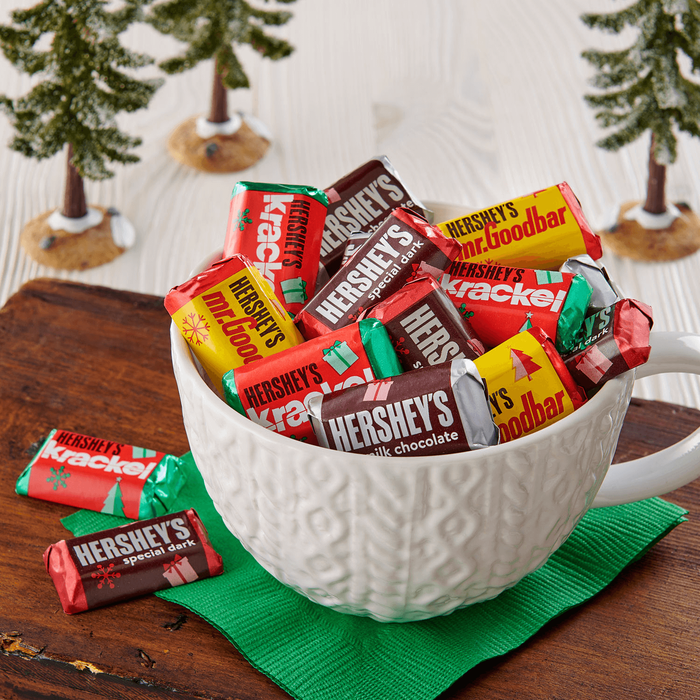By Dr. Sean Smyth – Analyst & Consultant, Smithers
The drivers of sustainability, automation and workflow as the world continues to digitize dominate most print and packaging operations. Recruiting and retaining skilled staff is increasingly difficult for many businesses as baby boomers retire and the younger digital native generations demand a different approach to their working life.
Digital print developments will be center stage at drupa across all graphics, industrial and packaging and there will be further announcements this year. Digital packaging offers many opportunities for commercial printers looking to move into new sectors as many traditional print applications continue to decline. The same dynamic is encouraging more equipment suppliers to offer digital printing systems for labels, corrugated, cartons, flexible packaging, rigid plastics, glass and metal packaging.
The figures below show how the suppliers of digital print equipment for labels and packaging have developed since this technology map was first produced in 2019. There has been a steady stream of new entrants, from established analog print equipment suppliers and new providers offering their digital print expertise.
Digital printing systems for packaging and labels in 2019
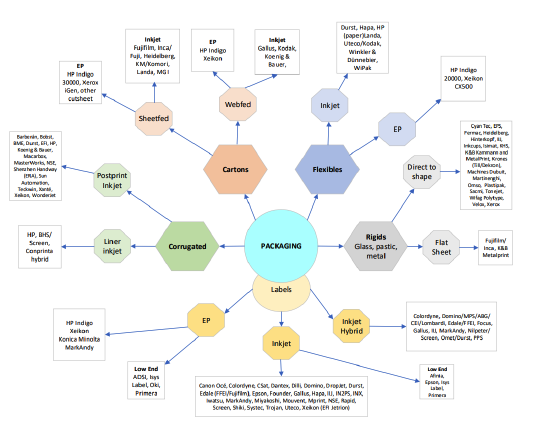
Digital printing systems for packaging and labels in 2023
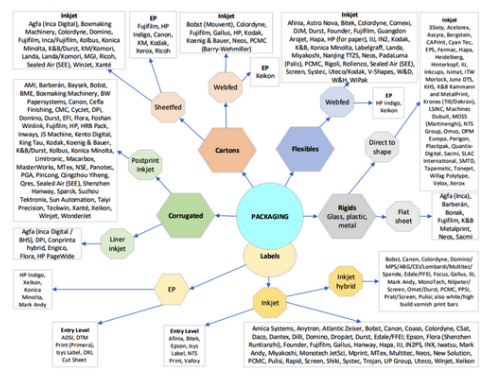
In addition to these there are digital overprint systems and sophisticated bespoke integrations, some operating as a part of manufacturing and filling lines. While there has been consolidation on the supply side, it is striking there have been few exits from the sector, the high number of players now competing in the wide range of packaging applications, offering new capabilities and functionalities, with steadily increasing productivity and lower costs.
Well, the good news for us print techies is this diagram (above) will get even more crowded this year. Smithers tracks the developments in this sector, publishing reports and running conferences on digitally printed packaging. The European, American, and Asian events bring together hundreds of brands, retailers, packer/fillers, converters, agencies and designers together with equipment, substrate and ink/toner suppliers, with workflow and logistics companies also involved.These are excellent forums and over the years the discussion moved from technology issues into tangible benefits and improved business processes from adopting digital printing, and increasingly digital finishing. Today quality, reliability and productivity are no longer issues for inkjet and electrophotography packaging presses.
At drupa there will be sheetfed inkjet machines offering the equivalent of process color sheetfed litho at speeds of 11,000 B1 sheets per hour and web presses offering speeds in excess of 400 mpm up to 2.8 m wide. These are mainstream alternatives to litho, flexo, and gravure alternatives.
The print head and press manufacturers are developing methods to eliminate inkjet artifacts, compensating for nozzle outs and deviations in real time that extend the life of the heads and machine uptime.
Inkjet will be the real winner, with faster machines being shown, particularly in flexible packaging. Ink technology is improving, with UV and water-based inks being employed for specific applications.
There will be more highly pigmented formulations helping reduce the ink film thickness while lowering the total cost of ownership further boosting the share of digital print.
It is not just printing. Some vendors will show single pass, highly automated systems to print and finish corrugated boxes, cartons and flexibles in a single pass. The enabler is the combination of digital print with digital finishing. These will feature automated control systems that drive the press, measure and check the print then track through finishing which may be coating, laminating, cutting, creasing, folding and gluing, together with a wide variety of embellishments.
The digital front end controllers are becoming increasingly powerful, automating and driving the digital print unit while at the same time measuring and controlling quality and then to set and drive the finishing technology. This approach helps replaces the traditional skills of press minders and finishing journeymen operators – important as skilled labor resources become scarcer.
While new digital presses are the shiny and sexy headline grabbers, even more important is the enabling workflow software. The only way of making money from a digital press is to produce saleable output and powerful workflow is vital to prepare the artwork files and keep the print queue well stocked. output and powerful workflow is vital to prepare the artwork files and keep the print queue well stocked.
This reality can be a barrier for packaging converters entering the sector as many do not have the necessary prepress and data handling skills. This year’s drupa will see many companies providing solutions with integrated management information systems to automate the administration needed to handle many short run jobs.
Workflow will become increasingly collaborative, with new designs produced and approved, then loaded into job queues for automated color management and imposition with no manual involvement at the converter. The MIS is linked, ordering substrates and planning the production on printer and finishing to meet the customer requirements and optimize capacity at the converter.
Digital workflow can be daunting for packaging converters accustomed to handling only a few large jobs but it is the way of the world. At drupa this year companies can explore solutions at drupa to simplify supply chains key to
future success supplying packaging and labels.
The market leaders offer a broad variety of creative software. They will show new methods to automate the repetitive processes involved with packaging design, approvals and prepress taking time and cost out of the process. Other players will offer specific solutions for integration and to optimize color management, imposition and providing variable data capability.
All these packaging developments are ultimately driven by end-customer expectations, or rather, demands. In the increasingly connected world these demands and expectations are changing, with more engagement and interaction to improve the consumer experience of the brand. Digital printing allows brands to make content decisions later in the supply chain. These additional functions move packaging beyond the traditional containment and protection functions, with information and promotion. A unique digital print product can be connected to the cyber world, opening new opportunities of logistical efficiency and greater consumer engagement.
This year’s drupa is an important print show because the exhibitors (and all the important ones will be there) will be showcasing what they have, while using the event to showcase what they are working on to gain feedback. And, digital packaging print (plus finishing) will very much be on the agenda.
There will be more machines for labels; corrugated – post and preprint, replacements for litholam; for folding cartons; for flexible packaging; for metal and there will be direct-to-shape machines doing interesting things on cans, aerosols, plastic and glass. Established players will show improvements to quality, speed and formats, with new inks and toners broadening the types of packaging they can produce.
In addition, I am really looking forward to seeing the newcomers who have already announced developments they will be showing off. I know of several potential developments sadly under NDA I am not allowed to mention until the show which is the bane of a technology correspondent. That will change when drupa opens. So, roll on May 2024!
